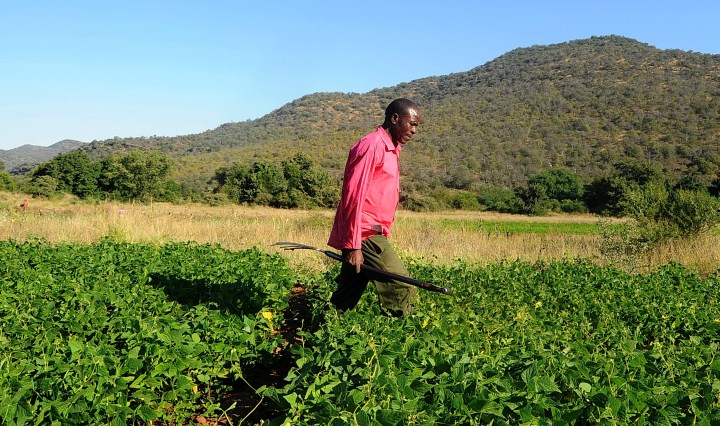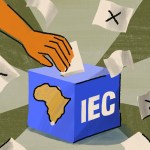Maverick Citizen Op-Ed
Government promise that ‘700,000ha of state land will be redistributed’ raises more questions than answers

Could this announcement be just another political strategy to win the people’s favour for the next elections?
“Minister Thoko Didiza announces over 700,000 ha of state land will be redistributed.”
This promise made headlines on many media platforms this past week.
Land reform has generally been slow, and many, especially those who need agricultural land, were buoyed by this development. This is a significant number of hectares in comparison to the usual estimate of about 100,000ha redistributed per annum.
On the face of it, this important announcement seemed to demonstrate an effort by the government to deliver on President Cyril Ramaphosa’s promise in his 2020 State of the Nation Address to release state land for agricultural purposes. At the same time, some are curious and want to know more about this decision as land reform was put on hold since lockdown while other debates related to land, such as food security, dominated the sector.
Finally, is something starting to happen? Could the thuma mina moment be upon us? If so, then what could the redistribution of state land really mean?
On 1 October, the Minister of Agriculture, Land Reform and Rural Development, Thoko Didiza, said 896 farms would be redistributed. Then on 5 October, the president’s weekly letter affirmed the redistribution of state land to black farm beneficiaries.
The Proactive Land Acquisition Strategy (PLAS) is the current redistributive policy. According to this policy, emerging black commercial farmers are expected, in time, to become fully fledged commercial farmers. The state owns the land and leases it to farm beneficiaries to rent for 30 years.
Two items in particular caught my attention in the minister’s announcement:
- The number of hectares to be redistributed in the various provinces.
- The application process for state land.
However, there are also questions about how the government is going to support all those new farm applicants, given the stark decrease in the supplementary land reform budget. Many are asking: where is the budget for training, recapitalisation and the other costs involved in the redistribution process going to come from?
Or could this announcement be just another political strategy to win the people’s favour for the next elections?
Planned redistribution of state land across provinces
In her announcement, Didiza stated that state land will be redistributed in the following manner:
- Eastern Cape will have 43,000 hectares available;
- Free State will have about 8,333 hectares available;
- KwaZulu-Natal will have about 3,684 hectares available;
- Limpopo will have 121,567 hectares available;
- Mpumalanga will have 40,206 hectares available;
- Northern Cape will have about 12,224 hectares available; and
- North West will have about 300,000 hectares available.
What is of concern is that this is not “new land”. It is land already owned by the state. In fact, most of the land to be redistributed is in North West and Limpopo provinces, which tells us that it is land that was originally acquired by the old apartheid state for homeland consolidation which was not incorporated into the homelands.
Significantly, there is no land allocated for distribution in Gauteng and Western Cape. In fact, most of that land is privately held.
This kind of redistribution is not new. During research into elite capture of land conducted in 2018, the PLAAS research team came across more such farms in Dr Ruth Mompati District in North West province. Most of the farms that were previously held in trusts under the Bophuthatswana government were transformed into redistributive PLAS farms and counted as land reform. This would be the state getting into leases with people who were already on the land.
In certain cases, the titled black beneficiary would even be evicted and the land allocated to others.
The 2019 Rakgase case is an example of how the government lures beneficiaries with the promise of ownership. It is also an example of why security of tenure is important for farm beneficiaries.
In conversation with farm beneficiaries, most of the farmers alluded to the rent-to-buy option, but we are yet to see a successful case of this. At this stage, the requirements for this are not known, and many farm beneficiaries still do not know when or how they qualify for ownership.
The president’s promise – but can we believe it?
The statement by the president clearly states that with “land ownership still concentrated in the hands of the few, and agriculture primary production and value chains mainly owned by white commercial farmers, the effects of our past remain with us today”.
He also bills this as a major milestone in the agrarian reform process, but that depends on which side of the fence you are on.
It would be worthy to see a lot of privately owned land redistributed to poor black beneficiaries instead of land that is already titled to a black owner being transferred and leased out to another black beneficiary.
This begs the question: is this the land reform we imagined?
What are we reforming of the current land status quo if this is merely the transfer of land from one black beneficiary to the next?
Other questions regarding the redistribution of state land are:
- What happens to land reform applicants in Gauteng and Western Cape who wish to farm within their provinces? Does this mean that there are no interested applicants there?
- How does the government aim to ensure equitable access to the state land it redistributes?
It is understandable that broadening access to land and opportunities for farming will support job creation and enterprise development, and improve the market for food, agricultural goods and services. However, one should ask the ministry questions about where this land is redistributed and whether that land is arable and usable for farming purposes.
Is the government really reforming the agricultural sector and is this the type of land reform that the public would like to see?
Application process biased against women and the poor
The purpose of agricultural land reform is to deliver on the promise of land restitution to give farm workers, women and other marginalised and landless groups an opportunity to become farmers and reduce inequality of access to land.
There were expectations that the criteria that qualify land reform applicants as beneficiaries would change, especially since on 3 January 2020 the new Department of Land Reform and Agriculture gazetted for public comment a draft National Policy for Beneficiary Selection and Land Allocation (the PLAAS submission on this policy is available here). But, listening to the minister and reading the president’s letter, it sounds as if the application process is still the same as the one used in the first phase by the former minister of rural development and land reform, Gugile Nkwinti.
This is despite findings from PLAAS research into elite capture in land reform that the PLAS application process was exclusionary of women, the landless and farm workers, and biased towards elite businessmen with political and economic connections.
Applicants followed the same process in that farms were advertised in districts, and the District Land Reform Committees (DLRCs), which were constituted of multiple stakeholders such as agribusiness, farmers, the department and members of the community, played a role in the selection process. What is concerning is that at this point it is not clear whether the District Beneficiary Screening Committee (DBSC) will be democratic and involve the farming community as the DLRCs did, or whether this will be strictly a government process.
Previously, this participatory role by the DLRCs was not entirely successful because of internal politics and other factors. A DLRC has to ensure that the applicant for an advertised farm has readily available resources and knowledge to carry out farming. As a result, the poorest applicants with no resources are excluded from the process. If poor applicants are appointed as beneficiaries, then they struggle more – especially if they are missed by the recapitalisation and post-settlement support opportunity.
This is a common struggle for most farm beneficiaries as there is often inadequate budget and corruption in the distribution of funds and other forms of support.
On the other hand, the elite businessmen who acquire farmland can work the farm as they have some financial muscle, even if they do not get funding.
Without sufficient budget how do you ensure financial support for farmers? How different is the DBSC from the DLRCs and will it be able to screen and ensure that poor deserving farmers benefit from this redistributive process?
There is certainly a backlog of farmers waiting to be considered for farmland, but there was no mention of whether those applications will be considered or whether they have to start the application process afresh.
In conclusion, there are four main issues for the government to consider in the process of land reform.
- Priority should be given to the redistribution of privately owned land in order to foster meaningful change by transforming the racially skewed land ownership inherited from the apartheid government.
- The government needs to develop a beneficiary application process that is not biased, but is democratic in nature. One that equally recognises the importance of equitable access to land – women and all marginalised poor groups should be prioritised.
- The budget must be large enough to ensure that all beneficiaries get the necessary support.
- The government needs to have the right mechanisms to ensure a redistribution process that is free of corruption. DM/MC
Katlego Ramantsima is a researcher and PhD student at the Institute for Poverty, Land and Agrarian Studies (PLAAS) at the University of the Western Cape; and a research associate at the Society Work and Politics Institute (SWOP), Wits University, investigating issues on land and wider impacts on poverty and inequality in South Africa.




















 Become an Insider
Become an Insider
Comments - Please login in order to comment.